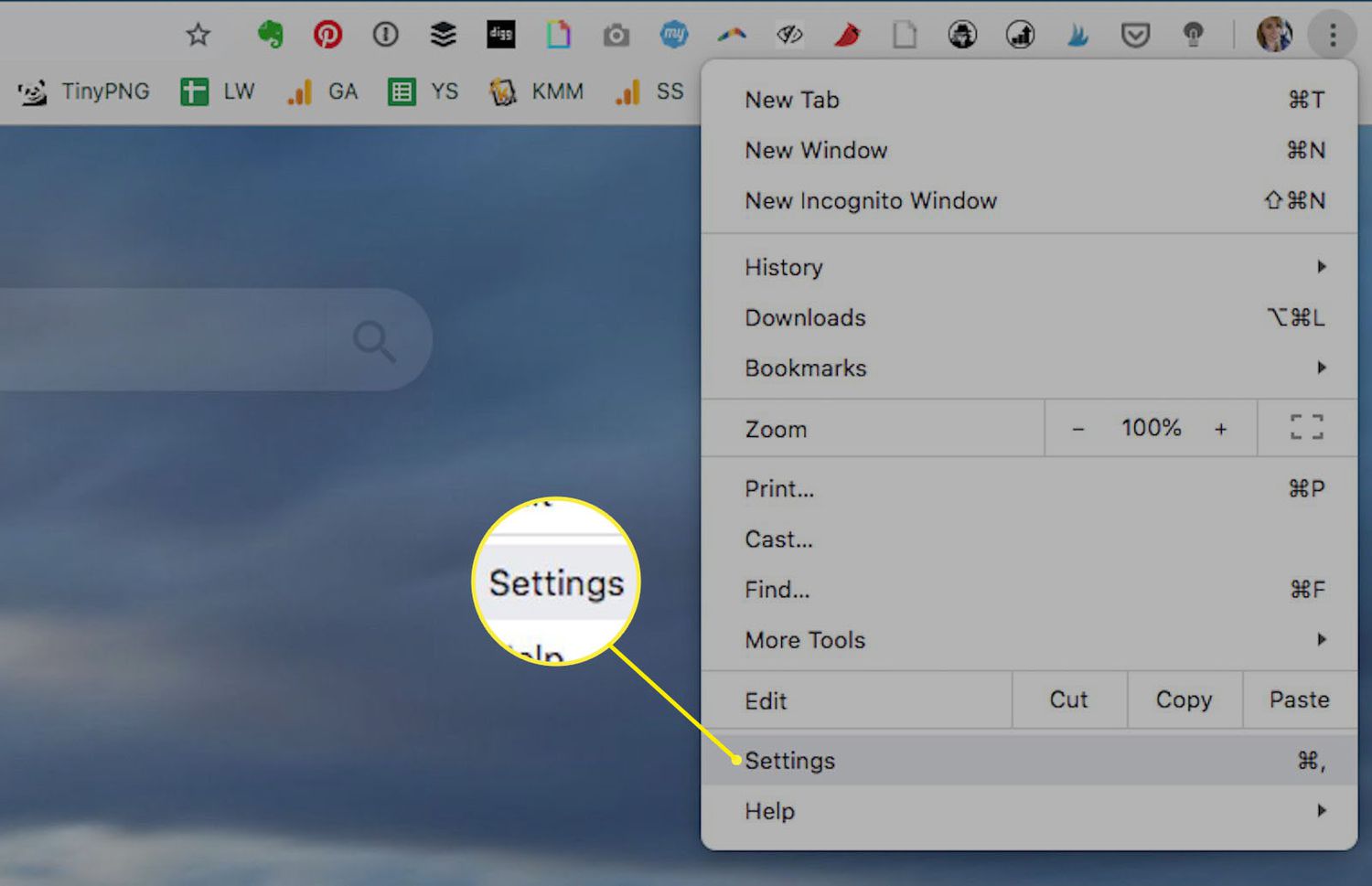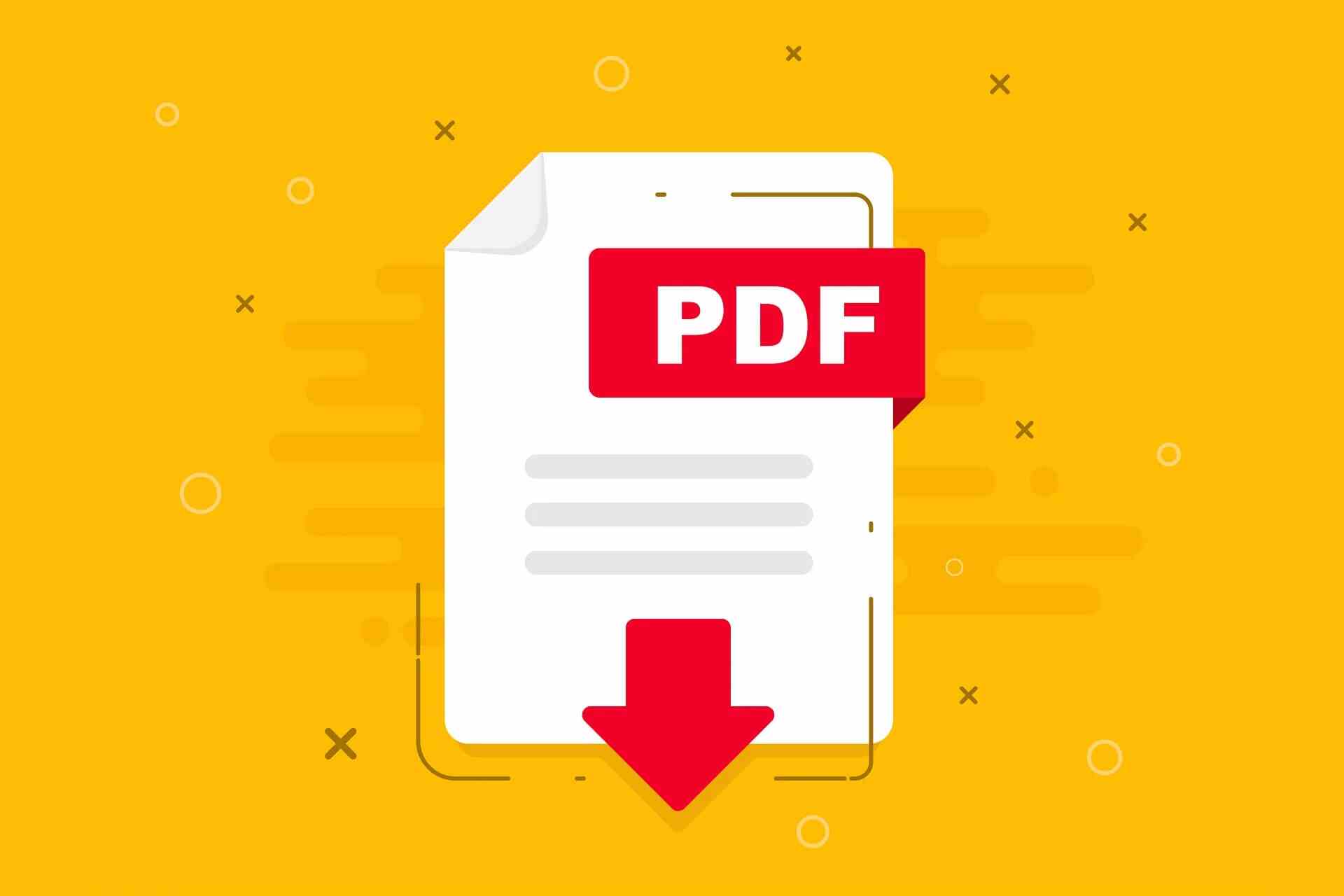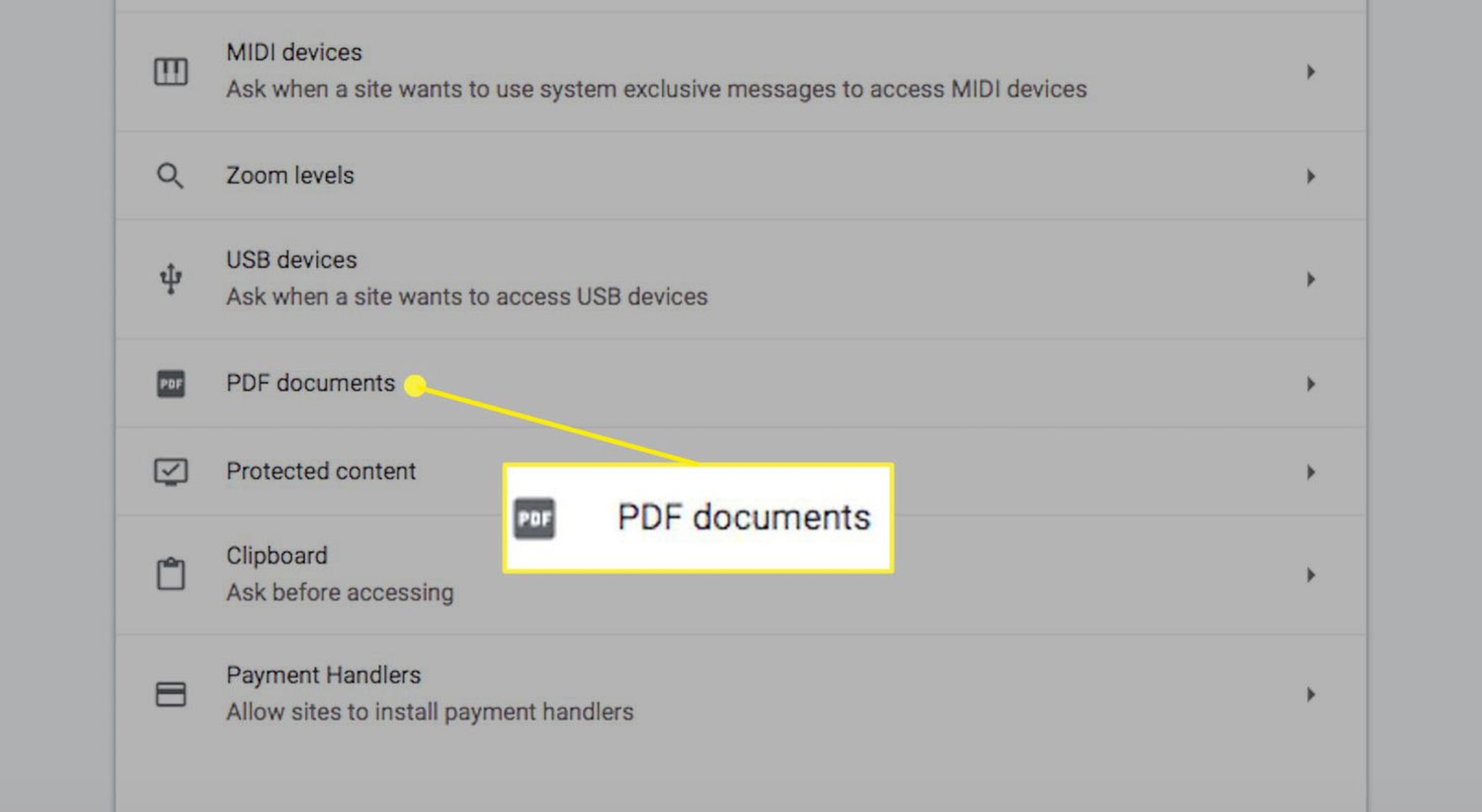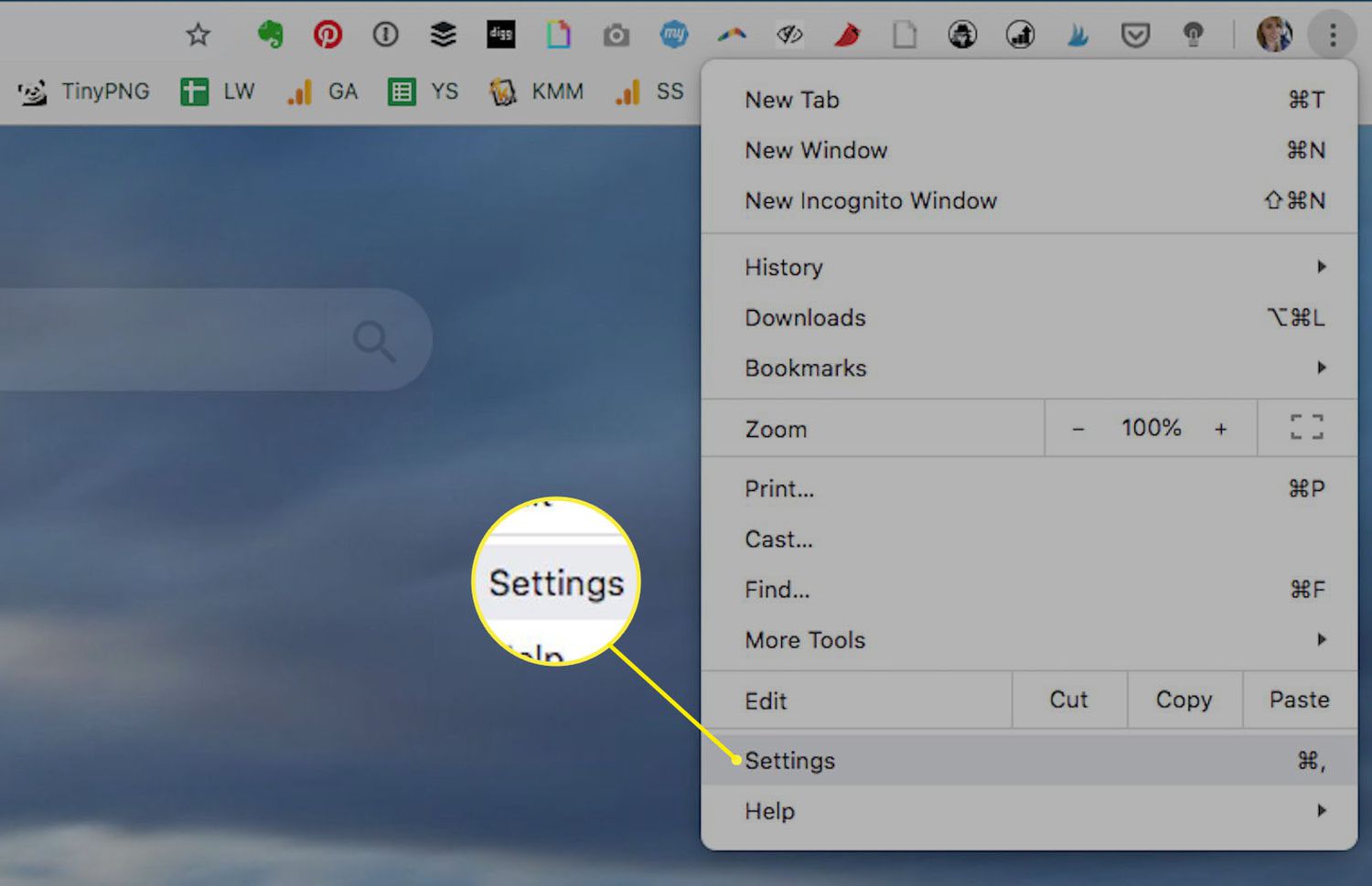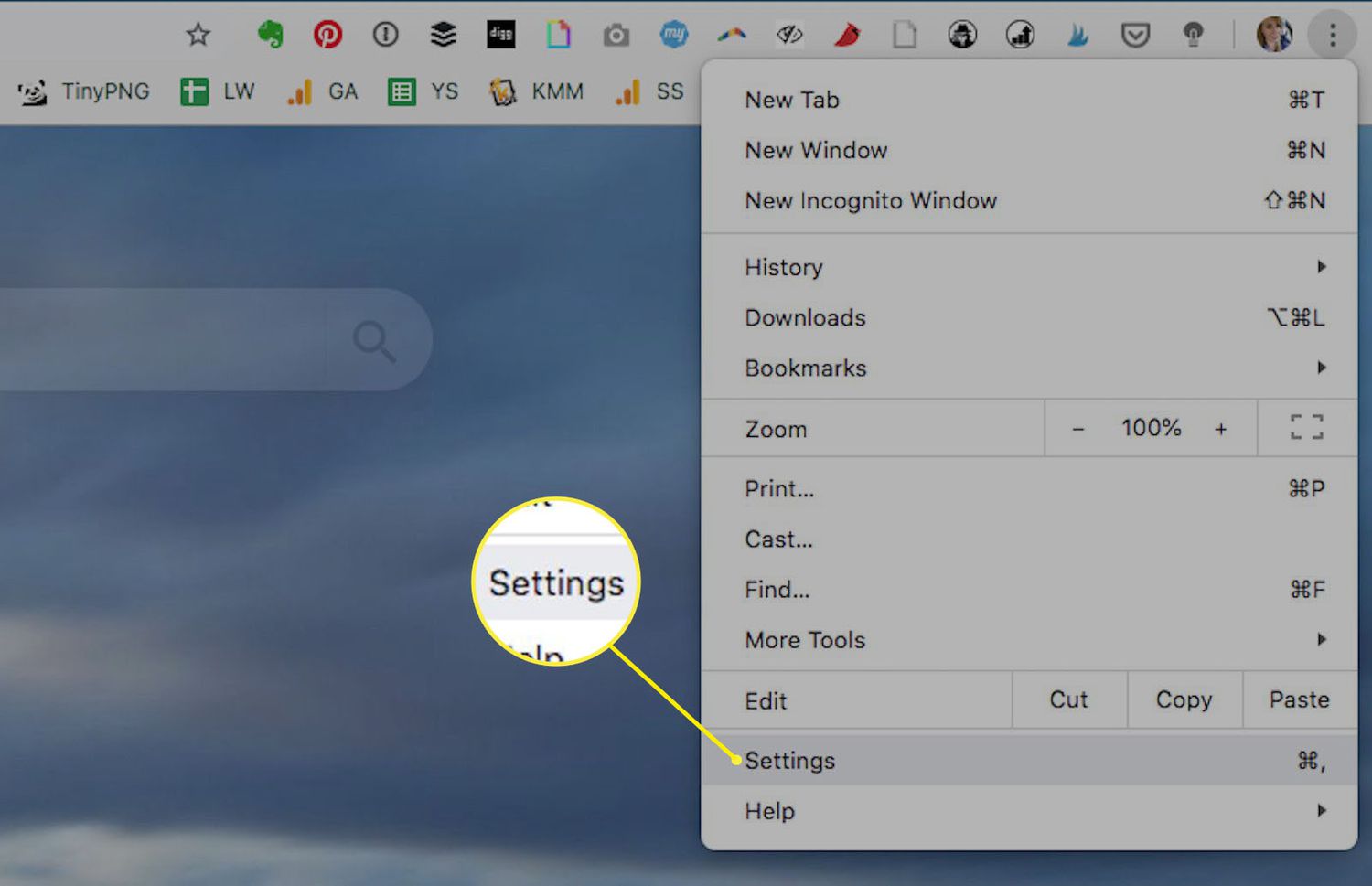Introduction
Opening PDF files in Chrome can be a convenient and efficient way to access and view documents without the need for additional software. However, there are instances when PDFs may not open in Chrome as expected, leading to frustration and inconvenience. Fortunately, there are several troubleshooting steps and solutions that can help resolve this issue and ensure a seamless experience when accessing PDFs in the Chrome browser.
In this comprehensive guide, we will explore various methods to address the challenge of PDFs not opening in Chrome. Whether you encounter a blank page, an error message, or an inability to view PDFs altogether, the following strategies will equip you with the necessary tools to overcome these obstacles and regain the ability to open PDF files directly within the Chrome browser.
By following the step-by-step instructions and implementing the recommended solutions, you can streamline your workflow and enhance your browsing experience by seamlessly accessing and viewing PDF documents in Chrome. From checking Chrome settings to utilizing extensions, we will delve into a range of effective approaches to troubleshoot and resolve the issue of PDFs failing to open in Chrome.
Let's embark on this journey to optimize your Chrome browser for handling PDF files, ensuring that you can effortlessly access and view these documents without encountering any obstacles. Whether you are a professional seeking to streamline your workflow or an individual looking to simplify your browsing experience, the insights and strategies presented in this guide will empower you to overcome the challenge of PDFs not opening in Chrome.
Check Chrome Settings
Before delving into more advanced troubleshooting methods, it's essential to start by checking the Chrome settings to ensure that everything is configured correctly for opening PDF files. Here's a step-by-step guide to help you navigate through the Chrome settings and make the necessary adjustments:
-
Accessing Chrome Settings: To begin, open the Chrome browser on your computer. Click on the three vertical dots located in the top-right corner of the browser window to access the Chrome menu.
-
Navigate to Settings: From the dropdown menu, select "Settings." This will open a new tab displaying various options and preferences for customizing your Chrome browsing experience.
-
Scroll Down to Advanced Settings: Within the Settings tab, scroll down to the bottom and click on "Advanced" to reveal additional settings and options.
-
Locate Content Settings: Under the "Privacy and security" section, locate and click on "Site settings." This will allow you to manage permissions and content settings for individual websites.
-
PDF Documents: Look for the "PDF documents" option within the Site settings. Here, you can verify and adjust the settings related to how Chrome handles PDF files.
-
Ensure PDFs Are Allowed: Check if the "Download PDF files instead of automatically opening them in Chrome" option is enabled. If this option is disabled, Chrome may automatically download PDF files instead of opening them in the browser window.
-
Adjust Settings as Needed: Depending on your preference, you can toggle the switch to enable or disable the option based on how you want Chrome to handle PDF files.
By following these steps and reviewing the Chrome settings related to PDF documents, you can ensure that the browser is configured to open PDF files directly within the browser window. This simple yet crucial step can often resolve issues related to PDFs not opening in Chrome, providing a seamless and hassle-free experience when accessing and viewing PDF documents online.
Taking the time to review and adjust the Chrome settings for handling PDF files can significantly impact your browsing experience, allowing you to effortlessly open and view PDF documents without encountering any unexpected obstacles. With the Chrome settings optimized to accommodate PDF files, you can proceed with confidence, knowing that your browser is equipped to handle these documents efficiently and effectively.
Update Chrome
Keeping your Chrome browser up to date is essential for ensuring optimal performance and compatibility with various file types, including PDF documents. Regular updates not only introduce new features and enhancements but also address potential issues and bugs that may affect the browser's functionality. If you encounter challenges with opening PDFs in Chrome, updating the browser to the latest version can often serve as a fundamental solution to resolve such issues.
To update Chrome to the latest version, follow these straightforward steps:
-
Access Chrome Menu: Open the Chrome browser on your computer. In the top-right corner of the browser window, click on the three vertical dots to access the Chrome menu.
-
Navigate to Help: From the dropdown menu, hover over the "Help" option to reveal a submenu.
-
Select About Google Chrome: Within the "Help" submenu, click on "About Google Chrome." This will open a new tab displaying information about the current version of Chrome and whether updates are available.
-
Automatic Update Check: Chrome will automatically check for updates and initiate the download and installation process if a new version is available. If an update is found, you will see a progress indicator as Chrome downloads and applies the latest version.
-
Relaunch Chrome: Once the update is installed, you will be prompted to relaunch the browser to apply the changes. Click on the "Relaunch" button to restart Chrome with the updated version.
By ensuring that Chrome is running the latest version, you can benefit from improved stability, security patches, and enhanced compatibility with various file formats, including PDFs. Additionally, updating Chrome can address any underlying issues that may have been causing PDFs to not open or display correctly within the browser.
Regularly checking for and applying updates to Chrome is a proactive approach to maintaining a seamless browsing experience and mitigating potential technical challenges. Whether you use Chrome for work, research, or personal browsing, staying up to date with the latest browser version is a simple yet impactful way to optimize performance and address any issues related to opening PDF files in Chrome.
By following these steps to update Chrome, you can ensure that your browser is equipped with the latest features and improvements, providing a reliable platform for accessing and viewing PDF documents without encountering any compatibility or functionality issues.
Clear Cache and Cookies
Clearing the cache and cookies in the Chrome browser can effectively resolve various browsing issues, including difficulties encountered when opening PDF files. The cache and cookies stored by the browser can sometimes become outdated or corrupted, leading to unexpected behavior and hindering the seamless display of PDF documents. By clearing these temporary files, you can refresh the browser's data and potentially eliminate any underlying issues that may be impacting the handling of PDF files.
To clear the cache and cookies in Chrome, follow these simple steps:
-
Access Chrome Settings: Open the Chrome browser on your computer and click on the three vertical dots in the top-right corner to access the Chrome menu.
-
Navigate to Settings: From the dropdown menu, select "Settings" to open a new tab displaying various options and preferences for customizing your Chrome browsing experience.
-
Clear Browsing Data: Within the Settings tab, navigate to the "Privacy and security" section and click on "Clear browsing data." This will open a window where you can select the types of data to clear.
-
Choose Data to Clear: In the "Clear browsing data" window, ensure that the checkboxes for "Cookies and other site data" and "Cached images and files" are selected.
-
Select Time Range: You can choose the time range for which you want to clear the data. Selecting "All time" will ensure that all cached files and cookies are cleared.
-
Clear Data: Once you have made your selections, click on the "Clear data" button to initiate the clearing process.
By following these steps, you can effectively clear the cache and cookies in Chrome, providing a fresh start for the browser's data storage. This process can help eliminate any potential conflicts or issues related to outdated or corrupted cache and cookies, ultimately improving the browser's ability to handle PDF files seamlessly.
Clearing the cache and cookies in Chrome is a proactive measure to maintain the browser's performance and address potential issues that may arise during browsing activities. By periodically clearing these temporary files, you can ensure that Chrome operates efficiently and effectively, allowing you to open and view PDF documents without encountering any unexpected obstacles.
Incorporating the practice of clearing the cache and cookies as part of your regular browser maintenance routine can contribute to a smoother and more reliable browsing experience, enhancing your ability to access and interact with various types of content, including PDF files.
Disable Chrome PDF Viewer
Disabling the Chrome PDF Viewer is a strategic approach to troubleshooting issues related to opening PDF files in the Chrome browser. By default, Chrome utilizes its built-in PDF viewer to display PDF documents directly within the browser window. However, in some cases, conflicts or compatibility issues may arise, leading to PDFs not opening or displaying correctly. Disabling the Chrome PDF Viewer allows you to explore alternative methods for handling PDF files, potentially resolving any underlying issues and ensuring a seamless experience when accessing these documents.
To disable the Chrome PDF Viewer, follow these steps:
-
Access Chrome Settings: Open the Chrome browser on your computer and click on the three vertical dots in the top-right corner to access the Chrome menu.
-
Navigate to Settings: From the dropdown menu, select "Settings" to open a new tab displaying various options and preferences for customizing your Chrome browsing experience.
-
Scroll Down to Advanced Settings: Within the Settings tab, scroll down to the bottom and click on "Advanced" to reveal additional settings and options.
-
Locate Content Settings: Under the "Privacy and security" section, locate and click on "Site settings." This will allow you to manage permissions and content settings for individual websites.
-
PDF Documents: Look for the "PDF documents" option within the Site settings. Here, you can find the setting to enable or disable the Chrome PDF Viewer.
-
Disable Chrome PDF Viewer: To disable the Chrome PDF Viewer, toggle the switch to turn off the option. This action will prompt Chrome to use alternative methods for handling PDF files, such as downloading them or utilizing third-party PDF viewer extensions.
By disabling the Chrome PDF Viewer, you can explore alternative approaches to opening and viewing PDF documents in Chrome. This can include using dedicated PDF viewer software or leveraging browser extensions specifically designed for handling PDF files. By diversifying the options for handling PDFs, you can potentially overcome any limitations or conflicts associated with the built-in PDF viewer, ultimately enhancing your ability to access and interact with PDF documents seamlessly within the Chrome browser.
Disabling the Chrome PDF Viewer provides a proactive and versatile solution for addressing challenges related to opening PDF files in Chrome. By taking control of how PDF documents are handled within the browser, you can adapt the viewing experience to align with your preferences and technical requirements, ensuring a smooth and efficient process for accessing and interacting with PDF content.
Incorporating the ability to disable the Chrome PDF Viewer into your troubleshooting toolkit empowers you to explore alternative methods for handling PDF files, offering flexibility and adaptability in addressing any issues that may arise during your browsing activities. Whether for professional or personal use, having the flexibility to customize the handling of PDF documents within Chrome can significantly impact your overall browsing experience, providing a tailored approach to accessing and viewing PDF content.
Use Adobe Acrobat Extension
Utilizing the Adobe Acrobat extension presents a compelling solution for addressing challenges related to opening and viewing PDF files in the Chrome browser. By integrating the capabilities of Adobe Acrobat, a leading platform for creating, editing, and managing PDF documents, as a browser extension, users can enhance their ability to seamlessly access and interact with PDF content directly within the Chrome environment.
To leverage the Adobe Acrobat extension, follow these steps:
-
Install the Extension: Begin by navigating to the Chrome Web Store and searching for the Adobe Acrobat extension. Once located, click on "Add to Chrome" to initiate the installation process. Follow the on-screen prompts to complete the installation, enabling the extension to integrate with your Chrome browser seamlessly.
-
Access PDFs with Ease: With the Adobe Acrobat extension installed, you can conveniently open and view PDF documents directly within the Chrome browser. The extension provides a user-friendly interface for interacting with PDF files, offering a range of features and tools for navigating, annotating, and collaborating on PDF content without the need to rely solely on the browser's built-in capabilities.
-
Enhanced Functionality: The Adobe Acrobat extension augments the native capabilities of Chrome, empowering users with advanced features for working with PDFs. From comprehensive viewing options to robust annotation tools, the extension elevates the PDF viewing experience, allowing for seamless interaction with complex documents and multimedia-rich content.
-
Seamless Integration with Adobe Services: By incorporating the Adobe Acrobat extension into Chrome, users can seamlessly access additional Adobe services and features, such as cloud storage, document sharing, and advanced editing functionalities. This integration expands the scope of PDF management within the browser, offering a comprehensive suite of tools for handling PDF documents effectively.
-
Customization and Productivity: The Adobe Acrobat extension enables users to tailor their PDF viewing experience to suit their specific preferences and workflow requirements. With customizable settings and productivity-enhancing features, such as bookmarking, search capabilities, and document organization, the extension empowers users to optimize their PDF-related tasks within the Chrome browser.
By integrating the Adobe Acrobat extension into the Chrome browser, users can unlock a wealth of capabilities for handling PDF documents with precision and efficiency. Whether for professional endeavors, academic pursuits, or personal use, the extension serves as a valuable asset in streamlining the process of accessing, viewing, and interacting with PDF content, ultimately enhancing the overall browsing experience within Chrome.
Conclusion
In conclusion, troubleshooting the issue of PDFs not opening in Chrome involves a systematic approach to address potential conflicts, compatibility issues, and browser settings. By navigating through the Chrome settings, updating the browser, clearing cache and cookies, disabling the Chrome PDF Viewer, and leveraging the Adobe Acrobat extension, users can effectively overcome obstacles and optimize their browsing experience when accessing PDF documents.
Ensuring that Chrome settings are configured to handle PDF files according to individual preferences is a fundamental step in streamlining the process of opening and viewing PDFs within the browser. By reviewing and adjusting the settings related to PDF documents, users can tailor their browsing experience to align with their specific requirements, ultimately enhancing efficiency and convenience.
Regularly updating Chrome to the latest version is essential for benefiting from improved stability, security patches, and enhanced compatibility with various file formats, including PDFs. By staying current with browser updates, users can mitigate potential technical challenges and ensure seamless compatibility when interacting with PDF content.
Clearing the cache and cookies in Chrome serves as a proactive measure to refresh the browser's data storage, potentially eliminating conflicts or issues related to outdated or corrupted temporary files. This practice contributes to a smoother and more reliable browsing experience, allowing users to access and view PDF documents without encountering unexpected obstacles.
Disabling the Chrome PDF Viewer provides users with the flexibility to explore alternative methods for handling PDF files, offering adaptability in addressing any issues that may arise during browsing activities. By taking control of how PDF documents are handled within the browser, users can tailor the viewing experience to align with their preferences and technical requirements.
Integrating the Adobe Acrobat extension into the Chrome browser presents a compelling solution for enhancing the ability to seamlessly access and interact with PDF content. The extension augments the native capabilities of Chrome, empowering users with advanced features for working with PDFs and expanding the scope of PDF management within the browser.
By implementing these strategies and solutions, users can navigate through potential obstacles related to opening PDFs in Chrome, ultimately optimizing their browsing experience and streamlining the process of accessing and interacting with PDF documents seamlessly within the browser.







